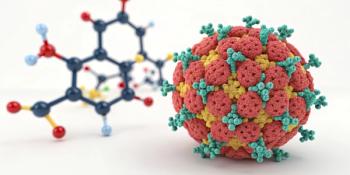
More Action Is Sought to Prevent Continuous Rise of Childhood Cancer in U.S.
The Max Cure Foundation is urging a dramatic reduction of toxic chemicals in the environment and within consumer products to reduce the number of children diagnosed with cancer.
The Max Cure Foundation is calling to scientists, policy makers, health advocates, businesses and parents to place prevention on an equal footing with treatment and the search for feasible cures for childhood cancer.
Executive Director of the Max Cure, Jonathan Agin, believes there's a critical need to act upon the science and evidence that demonstrates the importance of reducing toxic chemicals and the associated damage to our environment, in order to prevent numerous forms of childhood cancers, according to a news release.
Through information and supporting data provided in a recent release of the "Childhood Cancer: Cross-Sector Strategies for Prevention," report and the national Childhood Cancer Prevention Initiative, Agin asserts by focusing on the prevention of childhood cancer through common sense measures, the idea of finding real cures for the various forms of childhood cancer will not be replaced, but rather will alleviate the burden associated with the diagnosis in the first place, the release says.
"We must undertake a distinct and specific effort to reduce cancer causing exposures, as well as understand how such exposures may be helpful in guiding families to a selection of more effective therapies,” Agin says. “In the end, prevention is in fact the greatest cure of all.”
In other words, the call to action is for everyone to get involved.
According to the Foundation, roles of actions include: companies committing to produce safer chemicals in products, while consumers purchase those safer products. Additionally, the government needs to invest in prevention research, and policymakers need to advance public policies to create incentives for the production of safer chemicals in products. There is a need to support and expand regulations to reduce known-causes of cancer, and ultimately it's crucial to find ways to drive an economy that will help protect the health and wellbeing of all children, as well as sustain the growth of toxic-free businesses.
If more funds were invested into the research of prevention, the overall reduction of the burdens to the federal cancer research budget focused upon creating new therapies or producing less toxic drugs could be greatly reduced.
“It is imperative for the federal government, which is the top funder of research for childhood cancer, to join this initiative through vehicles such as the Congressional Childhood Cancer Caucus, where these discussions can take root and the focus can be shifted accordingly,” Agin says.
Childhood cancer is the leading cause of death by disease in children 19 years of age or younger in the United States, the release says. Frustratingly, less than 8% of the federal cancer research budget for the National Cancer Institute is allocated to pediatric-specific research. Of the overall amount of funded research, a significant portion never leaves the laboratory or goes further than a scientific paper.
The incidence rates of childhood cancer have increased 34% since 1975. In 2019, over 16,000 children, or approximately 1 in every 285 children in the U.S., were diagnosed with cancer. This is a time of great urgency that demands immediate action to prevent children being exposed to a number of risk factors in the environment, including traffic-related pollution, pesticides and solvents.
The "Childhood Cancer: Cross-Sector Strategies for Prevention," report was made possible by the efforts of Anne Reynolds Robertson, founder of Toxic Free Future for Our Children and a grant from the Reynolds Foundation.
Newsletter
Get the latest industry news, event updates, and more from Managed healthcare Executive.


















































